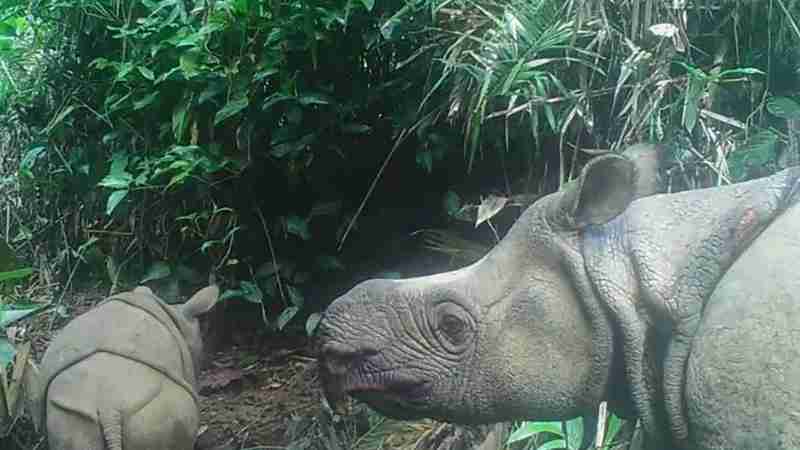In a heartening development, Indonesia’s Ujung Kulon National Park became the stage for a remarkable event in conservation history: the sighting of a newborn Javan rhinoceros. This event, captured through the lens of one of the park’s 126 cameras, showcases a calf, presumed to be between three and five months old, alongside its mother.
This sighting is a vibrant testament to the park’s effective breeding programs, offering a glimmer of hope for the critically endangered species.
Conservation Efforts Bearing Fruit
Conservationists, including Satyawan Pudyatmoko, a senior environment ministry official, enthusiastically welcomed the joyous discovery, which they hailed as proof of Javan rhinos‘ ability to reproduce in their natural habitat.
Nestled within the park’s 120,000 hectares, the Javan rhino population stands at 82 individuals. Known for their distinctive armor-like skin folds, these creatures have faced severe threats from poaching and habitat destruction, leading to their numbers dwindling in their once widespread habitat across Southeast Asia.
However, seeing the new calf brings hope, underscoring the success of ongoing conservation strategies. These include rigorous monitoring through camera traps, enhanced patrolling by park rangers, and comprehensive community education efforts to foster coexistence and support for the rhinos.
Collective Responsibility
The conservation of the Javan rhinoceros, with its alarmingly limited population confined to the protective boundaries of Ujung Kulon National Park, is a testament to the fragile coexistence between human advancement and the natural world. This recent success story accentuates the importance of continuous vigilance and commitment to conservation strategies that safeguard these majestic creatures and restore their natural habitats.
The role of the international community, alongside local stakeholders, is pivotal in ensuring the survival of the Javan rhino. Support for conservation initiatives, whether through advocacy, funding, or education, can make a significant difference. This shared responsibility highlights our collective power to effect change and ensure the continuation of the Javan rhino’s legacy.
As the celebration of this symbol of hope unfolds, there is a call to renew commitments to conservation efforts. The focus is on individuals‘ profound impact in safeguarding the planet’s invaluable biodiversity for generations to come.

